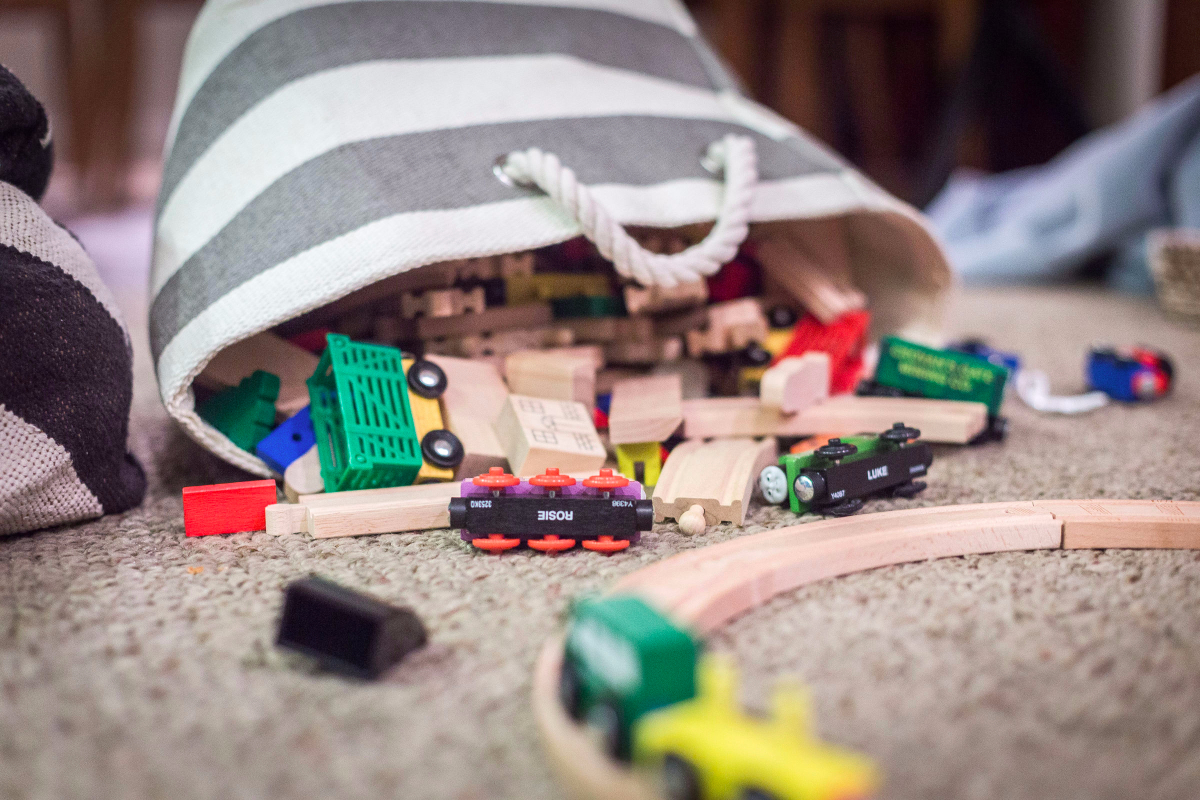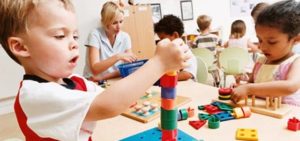Hello to all the friends and families of Regina Speech Centre.
Well, Christmas is upon us and approaching fast. It happens every year, you blink after Halloween and the stores are filled with Christmas decorations, treats and toys… and more and more toys. The TV screen is filled with advertisements, every flier is stuffed full of pictures and our children are bombarded with images of the latest and greatest ideas for their wish list. As a parent I struggle each year to balance what my children want with something I think is worth spending the money on, because the price tag seems to grow each year. With that in mind I thought I’d write down a few ideas to help guide you this Christmas season and hopefully give you something to think about before you pull out the wallet. As speech language pathologists we spend our careers testing toys. Every hour of every day is spent in play with the parents and children we work with, and I think it gives us a unique perspective on toys and their longevity and functionality. Combine that with the research and I am confident that we are able to give you a few toy buying tips this season.
So here it goes… 5 things you should look for in a toy:
5. Will it last?
No, I don’t mean can you throw it down the stairs and it doesn’t break (although that is a helpful feature in many toys). I mean, are your children able to use the toy over a few years, and longer hopefully. Is it a toy that has more than one use and can grow with your child? These are the toys that I still have in my house. If the toy only does one thing: push the button and it sings or lights up, chances are your child will outgrow the toy or get bored quickly. Look at the toy and think: what will my child be able to do with this toy this year or next. Let me give you an example:
A set of large nesting blocks: At age one your child can pull them apart, try and stack them fill them and dump them. At 2 they will be able to fit them back together by size, line them up, or label the pictures on them. At 3 they can use them in pretend play as a train, or cups for their dolls, figure out how to nest them and build giant towers. At 4 you can use them for more pretend play, create games with them, or build them up and high and knock them down.
4. No batteries
Seriously, NO BATTERIES! I have over the years found some fun toys that came with batteries, but I just remove them so the toys no longer make noise. There are some few and far between battery toys that are fun (for example: remote controlled vehicles or the occasional board game) but for the most part a battery based toy tends to be another one of those one shot wonder toys. It is designed to do one thing light up or make noise or move. The limitation in these skills sadly reflects the limited play skills developmental skills and language skills your child can gain from playing with such toys.
Also, from experience let me tell you these toys are fun for a short period but they will not stand the test of time.
To add on top of this is the broad base of growing research around the impact of noisy toys on children’s hearing. Did you know that there are no industry standards for what is a safe noise level for a child who is in close range to a noisy toy for a prolonged period? These toys have the capability of causing hearing damage. Also there is another broad base of research rolling out that demonstrates noisy toys are detrimental to caregiver child interactions. They impact the quality of interactions. The first few years of life are the basis for your child’s language development, which supports their early literacy development in school. If you are going to spend a big chunk of change on a toy let’s make sure it isn’t something that research actually shows is detrimental to development.
3. Fosters resourcefulness and problem solving
We all want our children to become independent in all areas of their life, including thinking. The ability to learn how to solve problems actually begins in play when children are challenged to think using the world around them. Look for the toys that require assembly, manipulation of materials, or solving skills. These are toys such as: play sets, building bricks, wooden blocks, train tracks, craft supplies, puzzles, interactive books, or board games to play as a family! Toys that allow your child to problem solve how to assemble or manipulate items, such as flaps in flap books for your little one, are equally as important as toys that allow for open ended play. These toys will develop their reasoning skills, problem solving skills, and engage them in sorting out their environments. The other beautiful piece to toys such as this is they naturally allow you as a parent to join in. They naturally set up opportunities for you to work alongside your child. Allowing your child independence to solve problems in their own way in play with flow over into their life and give them the ability to solve problems when they arrive on the playground or in school.
2. Promotes pretend play
Have you seen all the news buzz lately about the importance of unstructured play time for children? In this increasingly busy world the time to play with no agenda seems to be the last priority and children have less time for pretend play. Why is this problematic? The idea of pretend play is not as simple as it may seem. The process of pretending builds skills in many essential developmental areas. Did you know pretend play demonstrates a child’s knowledge of the world and essentially shows off their thinking skills? Imagination builds cognitive skills in many areas that are critical for later school and work success including: language, reasoning, social interaction and problem solving. So looking for toys that allow children the ability to pretend is a real boon to their brain growth. Anything from dolls, to kitchen sets, costumes and farm sets allow children to act out the world around them. This type of play is so open ended, really anything goes. You can see how children get a chance to practice all of their skills when engaging in symbolic play. Find something you think is fun too, so you can get in on the play and model and expand their schemes for them!
1. Promotes interaction
This one comes from the speechy side of me. Any toy that encourages face to face play time with an adult or other children is a win, win. Too many times we look for a toy that will occupy our child without us, and while I see the benefit of this as a parent myself (we all need some time to get things done in life), the time we spend talking and interacting with our children is critical. Research shows that children who have had large amounts of conversation directed towards them throughout their preschool years enter school with a much higher vocabulary and go on to be much stronger readers. Join in and play with your child! Ask yourself, would I enjoy playing this with my child? If the answer is yes, then you will probably get more value out of the toy if it encourages you to play with them!
Well, that really is all the advice I can muster this Christmas season. I hope this gives you a few ideas to guide you when you are out fighting the crowds at the mall. If you want some face to face advice please check out our Toy Talk sessions at the Early Years Family Centres over the next two weeks. You can see the full schedule by visiting the Regina Early Years website.
Merry Christmas and a Happy Holiday Season from the Regina Speech Centre!


